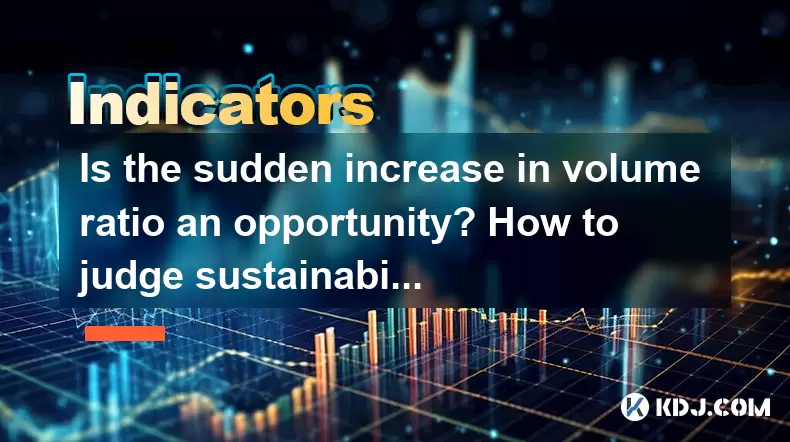-
 Bitcoin
Bitcoin $119000
-2.21% -
 Ethereum
Ethereum $4315
1.01% -
 XRP
XRP $3.151
-3.11% -
 Tether USDt
Tether USDt $0.0000
0.00% -
 BNB
BNB $808.5
-0.71% -
 Solana
Solana $175.8
-4.21% -
 USDC
USDC $0.9999
0.00% -
 Dogecoin
Dogecoin $0.2250
-3.92% -
 TRON
TRON $0.3469
1.77% -
 Cardano
Cardano $0.7818
-3.81% -
 Chainlink
Chainlink $21.47
-2.10% -
 Hyperliquid
Hyperliquid $43.30
-6.81% -
 Stellar
Stellar $0.4370
-2.84% -
 Sui
Sui $3.682
-4.40% -
 Bitcoin Cash
Bitcoin Cash $590.8
2.67% -
 Hedera
Hedera $0.2484
-5.20% -
 Ethena USDe
Ethena USDe $1.001
0.00% -
 Avalanche
Avalanche $23.10
-4.29% -
 Litecoin
Litecoin $119.2
-3.96% -
 Toncoin
Toncoin $3.409
0.90% -
 UNUS SED LEO
UNUS SED LEO $9.016
-1.29% -
 Shiba Inu
Shiba Inu $0.00001304
-3.82% -
 Uniswap
Uniswap $11.18
1.33% -
 Polkadot
Polkadot $3.913
-3.51% -
 Cronos
Cronos $0.1672
-3.08% -
 Dai
Dai $1.000
0.02% -
 Ethena
Ethena $0.7899
-4.70% -
 Bitget Token
Bitget Token $4.400
-1.23% -
 Pepe
Pepe $0.00001132
-5.93% -
 Monero
Monero $257.9
-6.44%
Is the sudden increase in volume ratio an opportunity? How to judge sustainability?
A sudden increase in cryptocurrency volume ratio can signal opportunities, but careful analysis of causes, sustainability, and market conditions is crucial.
May 29, 2025 at 12:35 pm

The sudden increase in volume ratio within the cryptocurrency market often captures the attention of traders and investors, presenting what might seem like an opportunity. Volume ratio, defined as the ratio of the current trading volume to the average volume over a specific period, can signal various market conditions. When this ratio spikes, it might indicate increased interest or a significant event affecting the asset. However, determining whether this surge presents a genuine opportunity and whether it is sustainable requires a careful analysis.
Understanding Volume Ratio Spikes
A sudden increase in the volume ratio can be attributed to several factors. News and announcements about the cryptocurrency, such as partnerships, technological upgrades, or regulatory changes, can lead to heightened trading activity. Market sentiment shifts, driven by broader economic factors or trends within the crypto space, can also cause volume spikes. Additionally, manipulative trading practices like pump-and-dump schemes can artificially inflate the volume ratio. Understanding the underlying cause is crucial for assessing whether the increase is a valid opportunity.
Analyzing the Sustainability of Volume Spikes
To judge the sustainability of a volume spike, it is essential to consider multiple indicators and factors. Historical data provides context, allowing you to compare the current spike with past instances. If similar spikes have led to sustained price increases or stability, it might suggest sustainability. Market fundamentals, such as the project's technology, team, and adoption rate, are also critical. A strong foundation can support sustained interest and volume.
Technical Analysis and Volume Spikes
Technical analysis plays a significant role in assessing the sustainability of a volume spike. Chart patterns and technical indicators like the Relative Strength Index (RSI) and Moving Average Convergence Divergence (MACD) can offer insights into market momentum and potential reversals. For instance, if a volume spike coincides with a breakout from a consolidation pattern and is supported by bullish technical indicators, it may indicate a sustainable move. Conversely, if the spike occurs during overbought conditions, it might be a warning sign of an impending correction.
Sentiment Analysis and Social Media
Sentiment analysis, particularly from social media platforms and forums, can provide additional clues about the sustainability of a volume spike. Positive sentiment and increased engagement around the cryptocurrency can suggest growing interest and potential for sustained volume. Tools like Sentiment Analysis APIs and monitoring platforms like Twitter and Reddit can help gauge public perception. If the sentiment is overwhelmingly positive and not driven by hype or manipulation, it may support the case for sustainability.
Risk Management and Trading Strategies
When considering a volume spike as an opportunity, effective risk management is crucial. Setting stop-loss orders can help limit potential losses if the spike proves unsustainable. Additionally, diversifying your portfolio can mitigate risks associated with individual assets. As for trading strategies, scalping might be suitable for taking advantage of short-term volume spikes, while swing trading could be more appropriate if the spike appears sustainable. Understanding your risk tolerance and investment goals is key to making informed decisions.
Case Studies of Volume Spikes
Examining case studies can provide practical insights into how volume spikes have played out in the past. For example, Bitcoin's volume spike in December 2017 was driven by widespread media coverage and FOMO (Fear of Missing Out), leading to a peak followed by a significant correction. In contrast, Ethereum's volume spike in early 2021 was supported by the DeFi (Decentralized Finance) boom and institutional adoption, contributing to more sustained growth. These examples illustrate the importance of understanding the broader context and underlying factors driving volume spikes.
Tools and Resources for Monitoring Volume Spikes
Several tools and resources can aid in monitoring and analyzing volume spikes. TradingView and CoinMarketCap offer real-time data and customizable charts for tracking volume ratios. CryptoQuant provides advanced on-chain metrics that can help identify the source of volume spikes, such as whale activity or exchange inflows/outflows. Utilizing these tools can enhance your ability to make informed decisions based on volume data.
Practical Steps for Analyzing Volume Spikes
When faced with a sudden increase in volume ratio, consider the following practical steps:
- Identify the cause: Research news, social media, and market trends to understand what might be driving the spike.
- Compare with historical data: Look at past volume spikes to see if there are patterns or outcomes that can inform your decision.
- Analyze technical indicators: Use tools like RSI, MACD, and chart patterns to assess market momentum and potential reversals.
- Evaluate market fundamentals: Consider the project's technology, team, and adoption rate to gauge its long-term potential.
- Monitor sentiment: Use sentiment analysis tools to gauge public perception and engagement around the cryptocurrency.
- Implement risk management: Set stop-loss orders and diversify your portfolio to manage potential risks.
- Choose a trading strategy: Decide whether to engage in scalping for short-term gains or swing trading for longer-term positions based on your analysis.
Frequently Asked Questions
Q: Can a volume spike be a false signal?
A: Yes, a volume spike can be a false signal, particularly if it is driven by manipulative practices like pump-and-dump schemes. It's important to investigate the cause of the spike and use multiple indicators to validate the signal.
Q: How long should I wait to determine if a volume spike is sustainable?
A: The timeframe for assessing sustainability can vary, but a general rule of thumb is to monitor the asset over several weeks. If the volume remains elevated and the price shows stability or growth, it may indicate sustainability.
Q: Are there specific cryptocurrencies more prone to volume spikes?
A: Yes, smaller cap cryptocurrencies are often more susceptible to volume spikes due to their lower liquidity and higher volatility. However, even major cryptocurrencies like Bitcoin and Ethereum can experience significant volume spikes driven by market events.
Q: Can volume spikes be predicted?
A: While it's challenging to predict volume spikes with certainty, monitoring upcoming events, news, and market sentiment can help anticipate potential spikes. Tools that track on-chain data and social media sentiment can also provide early warning signs.
Disclaimer:info@kdj.com
The information provided is not trading advice. kdj.com does not assume any responsibility for any investments made based on the information provided in this article. Cryptocurrencies are highly volatile and it is highly recommended that you invest with caution after thorough research!
If you believe that the content used on this website infringes your copyright, please contact us immediately (info@kdj.com) and we will delete it promptly.
- Bitcoin Price Rebound: Michael Saylor's Strategy and the Bullish Outlook
- 2025-08-13 00:50:12
- Dogecoin, Maxi Doge, Explode: Riding the Meme Coin Wave to the Moon (or Valhalla!)
- 2025-08-13 00:50:12
- Ethereum's $20 Billion Rally? Decoding the Latest Moves
- 2025-08-13 00:30:12
- Ancient Coins, Trade Networks, and the Rising Sun: Unearthing Southeast Asia's Economic Past
- 2025-08-13 00:30:12
- Dogecoin, Maxi Doge, and Whales: A New Era for Meme Coins?
- 2025-08-12 23:57:42
- PRC Coin: Revolutionizing Student Housing Payments with PRC Technologies and its Official Website
- 2025-08-12 23:57:42
Related knowledge

What does it mean when the +DI and -DI cross frequently in the DMI indicator but the ADX is flattening?
Aug 11,2025 at 03:15am
Understanding the DMI Indicator ComponentsThe Directional Movement Index (DMI) is a technical analysis tool composed of three lines: the +DI (Positive...

What does it mean when the moving average, MACD, and RSI all send buy signals simultaneously?
Aug 11,2025 at 01:42pm
Understanding the Convergence of Technical IndicatorsWhen the moving average, MACD, and RSI all generate buy signals at the same time, traders interpr...

What does it mean when the price is trading above the SAR indicator but the red dots are densely packed?
Aug 09,2025 at 11:49pm
Understanding the SAR Indicator and Its Visual SignalsThe SAR (Parabolic Stop and Reverse) indicator is a technical analysis tool used primarily to de...

What does it mean when the candlestick chart forms a "Morning Star" but trading volume is sluggish?
Aug 12,2025 at 06:28pm
Understanding the Morning Star Candlestick PatternThe Morning Star is a three-candle bullish reversal pattern commonly observed in cryptocurrency pric...

What does it mean when the RSI indicator moves sideways for an extended period between 40 and 60?
Aug 10,2025 at 08:08am
Understanding the RSI Indicator in Cryptocurrency TradingThe Relative Strength Index (RSI) is a momentum oscillator widely used in cryptocurrency trad...

What does it mean when the MACD histogram continues to shorten but the price reaches a new high?
Aug 09,2025 at 09:29pm
Understanding the MACD Histogram and Its ComponentsThe MACD (Moving Average Convergence Divergence) indicator is a widely used technical analysis tool...

What does it mean when the +DI and -DI cross frequently in the DMI indicator but the ADX is flattening?
Aug 11,2025 at 03:15am
Understanding the DMI Indicator ComponentsThe Directional Movement Index (DMI) is a technical analysis tool composed of three lines: the +DI (Positive...

What does it mean when the moving average, MACD, and RSI all send buy signals simultaneously?
Aug 11,2025 at 01:42pm
Understanding the Convergence of Technical IndicatorsWhen the moving average, MACD, and RSI all generate buy signals at the same time, traders interpr...

What does it mean when the price is trading above the SAR indicator but the red dots are densely packed?
Aug 09,2025 at 11:49pm
Understanding the SAR Indicator and Its Visual SignalsThe SAR (Parabolic Stop and Reverse) indicator is a technical analysis tool used primarily to de...

What does it mean when the candlestick chart forms a "Morning Star" but trading volume is sluggish?
Aug 12,2025 at 06:28pm
Understanding the Morning Star Candlestick PatternThe Morning Star is a three-candle bullish reversal pattern commonly observed in cryptocurrency pric...

What does it mean when the RSI indicator moves sideways for an extended period between 40 and 60?
Aug 10,2025 at 08:08am
Understanding the RSI Indicator in Cryptocurrency TradingThe Relative Strength Index (RSI) is a momentum oscillator widely used in cryptocurrency trad...

What does it mean when the MACD histogram continues to shorten but the price reaches a new high?
Aug 09,2025 at 09:29pm
Understanding the MACD Histogram and Its ComponentsThe MACD (Moving Average Convergence Divergence) indicator is a widely used technical analysis tool...
See all articles

























































































